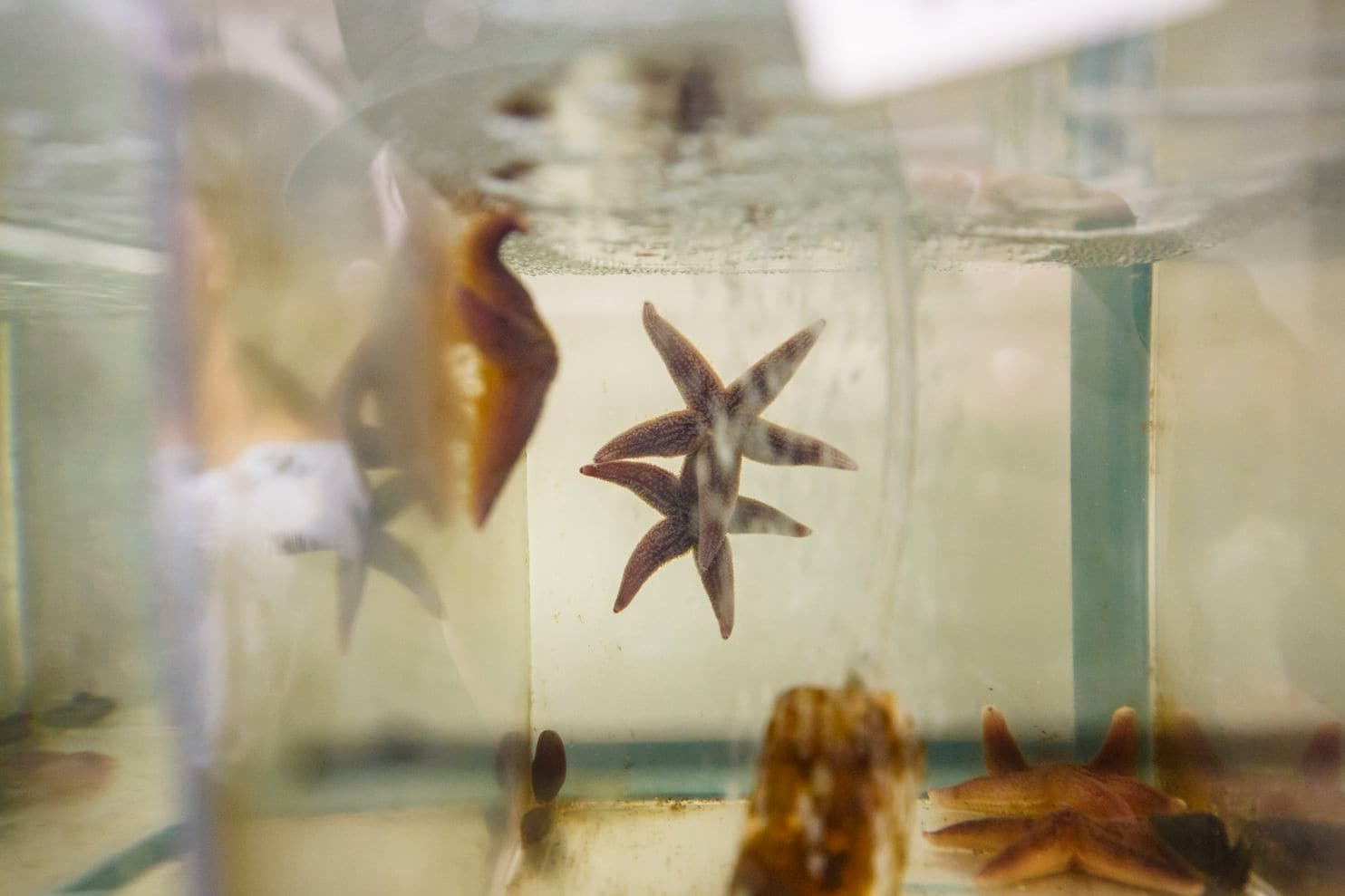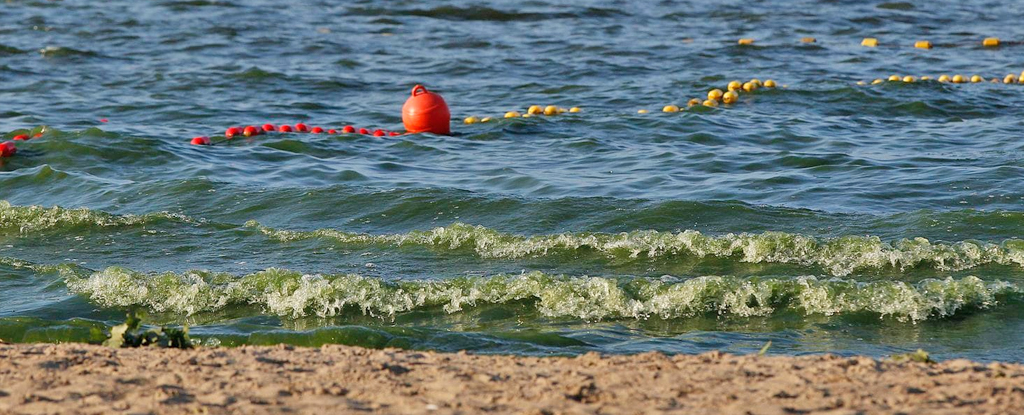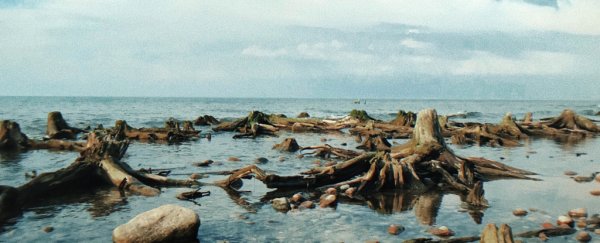Kiel, Germany: The herring here - both a symbol of the seaside region and a staple food that locals eat salted, pickled or fried - have plummeted to about a third of their population in the 1990s.
Cod have declined drastically, too. And they are getting smaller and thinner.
Scientists have observed fish in their samples whose white fatty underbellies had all but disappeared. "They just looked like they were starving," marine ecologist Jan Dierking said.
Then came this past summer's heat wave, which increased Baltic Sea temperatures to an unprecedented 80.6 degrees Fahrenheit (27 degrees Celsius), killing starfish and other fragile marine creatures.
It all could be a sign of things to come in a warming world.
The Baltic Sea is a sort of experimental pressure cooker for marine life, a test for how species fare - and whether they can survive at all - in conditions the world's oceans may soon experience.
"Many of the pressures have hit here much earlier and more intensely than in other world regions," said Thorsten Reusch, a marine ecologist based here at Germany's largest ocean research institute.
That is in part due to the Baltic's small size: It is roughly the size of California, or 1/250th of the Atlantic.
It is also tucked between nine countries - including Sweden to the north, Russia to the east and Germany to the south - whose residents pollute and dump waste into, travel over and swim through its delicate marine ecosystems.
As a result, conditions have been changing rapidly. The temperature of the Baltic has risen at roughly three times the average rate of global oceans over the past decade.
It has experienced a tenfold expansion of no-oxygen "dead zones" that wipe out fish and their habitats in the past 115 years. And it is seeing increasing levels of acidification.
 (Morris MacMatzen/Getty Images)
(Morris MacMatzen/Getty Images)
By studying the Baltic, and comprehensive data sets that span five decades, scientists are learning valuable lessons from nature. At times, the ecosystem is seemingly unaffected by a huge flux in conditions. At other times, species and their habitats are devastated when a tiny nudge in temperature or salinity disrupts the balance.
The Baltic offers an ominous but also in some ways hopeful vision of the capacity for species to adapt and what people working in collaboration might be able to do to mitigate environmental damage.
One problem Baltic researchers have observed is that animals and their food sources can fall out of sync.
That seems to have happened with baby herring and the small crustaceans they feed on. Researcher Catriona Clemmesen-Bockelmann says higher temperatures have prompted herring to hatch early, before their main food source has time to grow.
Cod, meanwhile, have been separated geographically from their main fish prey. To escape oxygen dead zones, cod have concentrated themselves in the southern Baltic, while the sprat they like to eat have shifted to the relatively cooler northern waters.
Cod still have access to tiny organisms on the sea floor as a food source. But the competition is fierce, and weaker cod may not get as much as they need.
Dierking hypothesizes that is why the cod in his samples were so thin.
"We think they all swam to the shallow water and crowded each other out, while competing for the same food," he said.
Some species are evolving in ways that help them cope with the Baltic's changing conditions - at least to a point. For example, certain local populations of mussels, jellyfish and stickleback have managed to adapt to a lower salt level in the water.
There is also evidence that Baltic cod may have adapted to a lower-oxygen environment than other cod populations.
And sometimes, as if to make up for a loss, a new species will appear in the Baltic for the very first time, said Björn Fischer, a 53-year old fisherman who is as proud of his apropos name as he is of the seven generations of fishermen before him.
Fischer noted that species such as sardines, sea bass and mackerel have migrated from southern waters that have become too warm for them.
"Somewhere another door always opens," he said. "As a fisherman, you always have to be ready to adapt."
Most scientists who study the Baltic Sea are less sanguine about the effects of climate change. But they see potential in the way the surrounding countries have cooperated in response to environmental problems such as overfishing and pollution.
In 1974, leaders from the Baltic-facing countries overcame their Cold War differences to establish an environmental pact and commission to manage their shared resource. The science-backed fishing quotas that followed, together with other regulations that are now being enforced by the European Union and Russia, have helped to reverse some harmful trends.
They have curbed the overfishing of some fish species and reduced toxic pollutants and other contaminants to revive the populations of seals, cormorants and eagles living near the Baltic's coasts.
"We know that EU-bashing is now very much en vogue all across Europe and the US," Reusch said.
"But the good flip side of it is, of course, that the EU Commission now has a catalogue of sanctions they can impose on countries when they don't meet, for example, their nutrient reduction goals. And I think that's a good thing."
The environmental protection regime has its shortcomings. There has been no crackdown on countries that allow massive amounts of agricultural runoff into the Baltic.
"Basically every country is failing that," Reusch said.
In July, algae blooms that are a result of such runoff, and that rob fish and their habitats of oxygen, forced Poland to shut down 50 Baltic Sea beaches.
 (Czarek Sokolowski/AP)
(Czarek Sokolowski/AP)
The countries surrounding the Baltic Sea also have been slow to turn their attention to climate change.
Reusch noted the successes of the fishing quotas aimed at helping stocks recover are being erased by the effects of higher temperatures.
The solutions to the most vicious problems, he said, start many miles away from the water. They require people to change how they farm, how much money they are willing to spend on food, how they travel.
But he remains hopeful countries can coordinate their response, in the Baltic and beyond.
"I think we have to take our chances," he said.
"I mean, what's the alternative? It's not a workable solution to say it's hopeless or we don't do anything. Because it can always get worse. Definitely."
2018 © The Washington Post
This article was originally published by The Washington Post.
